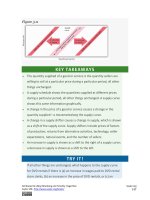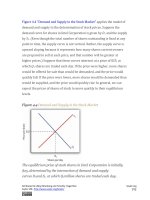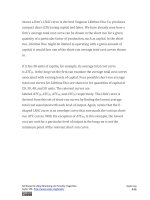Authors libby rittenberg 806
Bạn đang xem bản rút gọn của tài liệu. Xem và tải ngay bản đầy đủ của tài liệu tại đây (493.54 KB, 1 trang )
“The art of taxation consists in so plucking the goose as to obtain the
largest possible amount of feathers with the smallest possible amount
of hissing.”
Economists, who do not typically deal with geese, cite two criteria for
designing a tax system. The first is based on the ability of people to pay
taxes and the second focuses on the benefits they receive from particular
government services.
Ability to Pay
The ability-to-pay principle holds that people with more income should
pay more taxes. As income rises, the doctrine asserts, people are able to
pay more for public services; a tax system should therefore be constructed
so that taxes rise too. Wealth, the total of assets less liabilities, is
sometimes used as well as income as a measure of ability to pay.
The ability-to-pay doctrine lies at the heart of tax systems that link taxes
paid to income received. The relationship between taxes and income may
take one of three forms: taxes can be regressive, proportional, or
progressive.
Regressive Tax
A regressive tax is one that takes a higher percentage of income as income
falls. Taxes on cigarettes, for example, are regressive. Cigarettes are an
inferior good—their consumption falls as incomes rise. Thus, people with
lower incomes spend more on cigarettes than do people with higher
Attributed to Libby Rittenberg and Timothy Tregarthen
Saylor URL: />
Saylor.org
806









